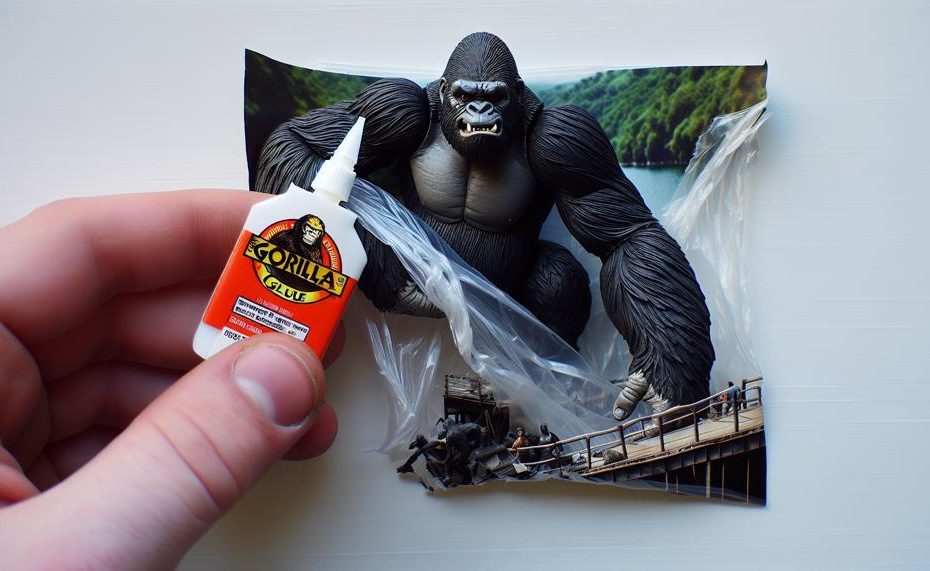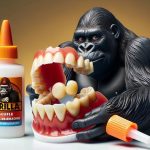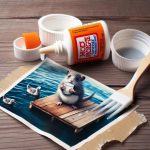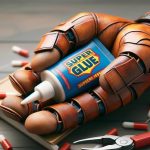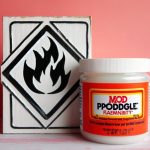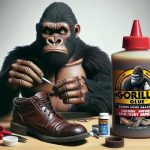Are you tired of endlessly searching for the perfect adhesive to bond with plastic? Look no further, because gorilla glue is here to save the day.
This versatile and robust adhesive has been gaining popularity in recent years for its remarkable effectiveness on plastic surfaces. But what sets it apart from other glues?
In this guide, let’s delve into the advantages of using gorilla glue for all your plastic projects:
- Unbreakable bond: Gorilla glue creates an incredibly strong bond that can withstand heavy weights and tough conditions, making it ideal for plastic materials.
- Waterproof wonder: Whether you’re working on indoor or outdoor projects, gorilla glue’s waterproof formula ensures a long-lasting hold even in wet environments.
- Versatile genius: Not only does gorilla glue work wonders on various types of plastics, but it also forms a reliable bond with other materials such as wood, metal, and more.
- Effortlessly easy: With its user-friendly applicator and quick-drying formula, gorilla glue makes any DIY project a breeze.
Say goodbye to weak adhesives and welcome the ultimate solution for all your plastic bonding needs. Trust us; once you experience the power of gorilla glue, there’s no turning back.
Table of Contents
- 1 Which Gorilla Glue Is Best For Plastic?
- 2 How Does Gorilla Glue Stick To Plastic?
- 3 How Do You Use Gorilla Glue On Plastic?
- 4 How Long Does Gorilla Glue Take To Dry On Plastic?
- 5 How To Store Gorilla Glue After Using It?
- 6 The Benefits Of Using Gorilla Glue On Plastic?
- 7 How Do I Get Gorilla Glue Off My Hands?
- 8 Can I Use Gorilla Glue On Plastic Dishes?
- 9 Does Gorilla Glue Work On Plastic Glasses Frames?
- 10 Does Gorilla Glue Work On Car Plastic?
- 11 Conclusion
Which Gorilla Glue Is Best For Plastic?
When it comes to using Gorilla Glue on plastic surfaces, it is crucial to select the right type of glue for the job. The original white glue and gel versions are the best choices, as they have been thoroughly tested and proven to effectively bond with most types of plastic, including acrylic, polycarbonate, and ABS.
However, it’s important to keep in mind that Gorilla Glue does not work well with polyethylene or polypropylene plastics.
In addition to choosing the right type of glue, proper surface preparation is key to a strong bond. Before applying the glue, make sure to clean and dry the surface thoroughly. Lightly scuffing the surface with sandpaper can also improve adhesion.
It’s essential to exercise caution when using Gorilla Glue on plastic surfaces. Due to its strong bonding properties, it can be challenging to remove any mistakes when working with polyethylene or polypropylene plastics. Furthermore, there may be potential toxicity from ingested or harmful fumes in poorly ventilated areas.
How Does Gorilla Glue Stick To Plastic?
Gorilla Glue’s incredible ability to stick to plastic is a direct result of its composition, formula, and chemical reaction. The polyurethane-based formula of Gorilla Glue, combined with moisture, undergoes a process known as cross-linking. This process creates powerful bonds between the polyurethane molecules and the plastic surface. Additionally, additives are present in the glue to accelerate this process.
Surfactants are also added to ensure an even spread of the adhesive. Furthermore, the adhesive has the capability to penetrate and firmly adhere to even the smallest pores on the surface, creating both a mechanical and chemical bond.
This unique combination of factors results in a superior level of strength and durability for Gorilla Glue’s bond with plastic.
One way to visualize this is by imagining a strong handshake between two individuals. In this case, Gorilla Glue’s polyurethane molecules and plastic surface are like two individuals with exceptionally strong grips coming together to form an unbreakable bond.
This bond is further strengthened by the surfactants that ensure a smooth and uniform connection between the two surfaces.
Additionally, Gorilla Glue’s chemical reaction with moisture plays a crucial role in its ability to bond with plastic. The presence of moisture triggers the cross-linking process, allowing for the formation of strong bonds between the molecules and the surface.
This not only creates a chemical bond but also allows for mechanical adhesion as the glue seeps into microscopic pores on the plastic surface.
How Do You Use Gorilla Glue On Plastic?
If you want to know how to properly use Gorilla Glue on plastic materials, follow these step-by-step instructions:
- Clean the surfaces: Before applying the adhesive, it’s crucial to ensure that both surfaces are clean and free of any dirt or debris. Use a damp cloth to wipe away any dust or grime and let it dry completely.
- Prepare the adhesive: For cartridge units, unscrew the nozzle and cut off the tip of the cartridge. For tubes, unscrew the cap and fold the screw on the nozzle upwards to make it easier to cut.
- Cut the desired bead size: Twist the nozzle in the direction you want to cut and apply pressure to create an even bead.
- Apply in a zigzag pattern: Starting at one corner, use the nozzle to apply the adhesive in a zigzag pattern across the surface, ensuring even coverage.
- Use a paint roller for larger areas: If you’re working with larger surfaces, using a paint roller can help achieve more even coverage.
- Attach your surfaces: Once you’ve applied the adhesive, attach your plastic materials while it’s still wet. Hold them together for 20–60 seconds to allow time for bonding.
- Clean up excess glue: Wipe away any excess wet glue with a damp cloth or paper towel as you go. For dried glue, use a putty knife or sandpaper to remove it.
- Let it set: The glue will dry clear within 24 hours, but it’s best to wait at least 30 minutes before handling your project again.
- Follow the manufacturer’s instructions: It’s essential to read and follow all instructions on the label for the best results.
- Test first: Before using the adhesive on your project, always test it on a small area to ensure proper application and desired results.
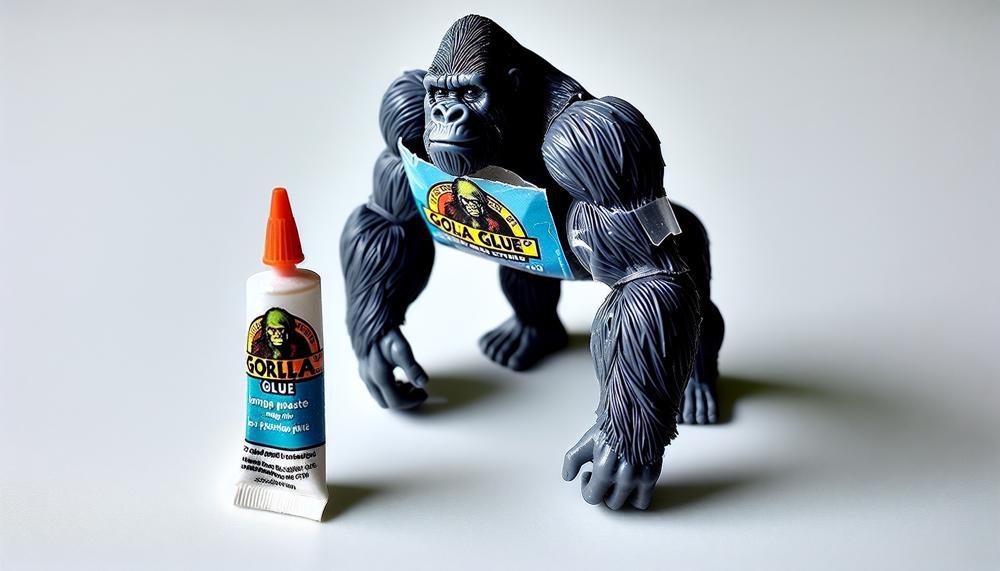
| Step | Description | Tools Needed |
|---|---|---|
| 1 | Clean the surfaces | Damp cloth |
| 2 | Prepare the adhesive | Cartridge unit or tube |
| 3 | Cut the desired bead size | Nozzle and pressure |
| 4 | Apply in a zigzag pattern | Nozzle and pressure |
| 5 | Use a paint roller for large areas | Paint roller |
| 6 | Attach your surfaces | N/A |
| 7 | Clean up excess glue | Damp cloth or paper towel |
How Long Does Gorilla Glue Take To Dry On Plastic?
Based on the previous section, the drying time for Gorilla Glue on plastic surfaces can vary due to different factors. However, as a general rule, it typically takes 0 to for the glue to dry and approximately to fully set. Surface preparation, temperature, and humidity are just a few of the variables that can affect this time.
Factors Impacting Drying Time:
- Surface Preparation: Before applying Gorilla Glue to plastic surfaces, it is crucial to ensure that the surfaces are thoroughly cleaned and free from any dust or debris. Any dirt or particles can hinder the bonding process and affect the drying time.
- Type of Gorilla Glue Used: Gorilla Glue offers various versions of their adhesive, such as Original, Super Glue, and Epoxy. Each version may have a slightly different drying time, so it is essential to follow the instructions specific to the particular version being used.
- Temperature and Humidity: High temperatures and humidity can accelerate the drying process, while low temperatures and dry conditions may slow it down. It is recommended to use Gorilla Glue at room temperature (around 70°F) for optimal results.
Ensuring a Strong Bond:
To ensure a strong bond between the plastic surfaces, it is advisable to apply clamping pressure for at least one hour. This will help the glue fully set and create a robust bond between the surfaces.
| Surface Preparation | Type of Gorilla Glue Used | Temperature and Humidity |
| Clean and Debris-free | Original, Super Glue, Epoxy | High temperature and humidity speeds up drying time; low temperature and dry conditions slows it down |
How To Store Gorilla Glue After Using It?
To properly store Gorilla Glue after using it on plastic, follow these steps:
- Seal the lid or cap tightly: After each use, make sure to close the container tightly to prevent air from entering and drying out the remaining glue. This helps the glue stay fresh and ready for future projects.
- Keep in a cool, dry place: Extreme temperatures can quickly dry out Gorilla Glue and reduce its effectiveness. It’s best to store the glue in a controlled-temperature environment, away from direct sunlight or heat sources.
- Transfer to a smaller container: If you only use small amounts of Gorilla Glue at a time, consider transferring some into a smaller container with an airtight lid. This helps prevent air from entering the original container and drying out the glue.
- Use within recommended shelf life: For best results, use Gorilla Glue within one year if unopened or six months if opened. Be sure to check the expiration date and replace any old glue for optimal bonding strength.
- Revive dried-out glue: If your Gorilla Glue has already dried out due to improper storage, try adding a small amount of water and mixing it thoroughly. Alternatively, you can use an acetone-based solvent to dissolve the dried glue.
By following these storage tips, you can ensure that your Gorilla Glue remains usable for future projects and maintains its strong bonding capabilities on plastic surfaces.
The Benefits Of Using Gorilla Glue On Plastic?
When it comes to gluing plastic, Gorilla Glue stands out from other types of glue for several specific reasons. These benefits include its exceptional bond strength, versatility, waterproof properties, quick drying time, durability, and specific recommendation for use on plastics.
Firstly, Gorilla Glue boasts a bond strength of 0 PSI, making it one of the strongest glues available on the market. This is especially beneficial when working with hard materials like plastic.
Secondly, this glue is incredibly versatile and can be used on various plastic surfaces, including PVC, ABS, and acrylic. This makes it a convenient option for a wide range of projects.
Thirdly, Gorilla Glue is waterproof, making it suitable for both indoor and outdoor use. This is a significant advantage when using it on plastic items that may come into contact with water.
In addition to its strength and versatility, Gorilla Glue also dries quickly in just 10–45 seconds. This fast-drying time makes it ideal for quick repairs that don’t require extended waiting periods.
Moreover, once cured, Gorilla Glue creates a strong and durable bond that can withstand extreme temperatures and harsh conditions. This makes it a reliable option for long-lasting repairs on plastic items.
Lastly, while some types of glue may not work effectively on plastic, Gorilla Glue is specifically recommended for use on plastics. However, it should be noted that it is not suitable for use with polyethylene or polypropylene plastics.
To sum up, the benefits of using Gorilla Glue on plastic are numerous and make it an excellent choice for bonding plastic items.
How Do I Get Gorilla Glue Off My Hands?
Accidentally getting Gorilla Glue on your hands can be a sticky situation. But don’t worry, there are numerous effective methods to remove the glue from your skin. Here are some tips to help you get Gorilla Glue off your hands.
Soap and Water Method:
- This is the most commonly used method for removing Gorilla Glue from hands.
- Soak your hands in warm, soapy water for several minutes to soften the glue.
- Use a gentle scrub brush or cloth to rub away the softened glue.
- Rinse with warm water, and repeat if necessary.
Vegetable/Cooking Oil:
- Apply a generous amount of vegetable or cooking oil to the affected area.
- Let it sit for a few minutes to loosen the glue.
- Use a cloth or paper towel to wipe away the glue.
- Repeat if necessary.
Acetone Fingernail Polish Remover:
- Soak a cotton ball or cloth with acetone fingernail polish remover.
- Gently rub the affected area until the glue starts to dissolve.
- Wipe away the softened glue with a clean cloth or paper towel.
- Rinse with warm water and repeat if necessary.
Petroleum Jelly:
- Apply a thick layer of petroleum jelly to the affected area.
- Let it sit for 15 minutes to soften the glue.
- Use a cloth or paper towel to wipe away the softened glue.
- Repeat if necessary.
Hand Sanitizer:
- Apply a generous amount of hand sanitizer to the affected area.
- Rub it in gently for a few minutes.
- The alcohol in hand sanitizer helps to break down the glue bonds.
- Wipe away the softened glue with a cloth or paper towel and rinse with warm water.
Goof Off Professional Strength Remover:
- This is a stronger alternative to acetone fingernail polish remover.
- Follow the instructions on the package for safe use on skin.
- Apply onto the affected area and let it sit for a few minutes.
- Use a cloth or paper towel to wipe away the glue.
- Rinse with warm water and repeat if necessary.
Protective Gloves:
- The best way to prevent accidental contact with Gorilla Glue is to wear protective gloves while working with it.
- If you do get glue on your hands, you can simply remove the gloves without worrying about the glue sticking to your skin.
Seek Medical Attention:
- In rare cases where the glue has bonded to the skin or caused irritation, seek medical attention for safe removal.
- It is important to act quickly and use a gentle approach when removing Gorilla Glue from your hands.
- Avoid using harsh chemicals or abrasives, as they can damage the skin.
- And always remember to wear protective gear when working with strong adhesives.
Can I Use Gorilla Glue On Plastic Dishes?
No, it is not recommended to use Gorilla Glue on plastic dishes.
If you do choose to use Gorilla Glue on dishes, make sure to thoroughly wash them before using them again.
Does Gorilla Glue Work On Plastic Glasses Frames?
There is no doubt that Gorilla Glue can work wonders when it comes to fixing plastic glasses frames. However, its effectiveness depends on several factors, including the type of plastic used and how closely the instructions are followed.
It is crucial to thoroughly clean the glasses frames before applying the glue and to use a small amount to prevent any messy application.
Keep in mind that some users have experienced discoloration on certain types of plastic, so it’s always a good idea to test the glue on a small area first.
In more complex cases, it may be wise to seek professional assistance for major repairs or replacements.
Does Gorilla Glue Work On Car Plastic?
The answer is yes, but it’s crucial to note that not all plastics are the same, and some may require a different type of adhesive. Before attempting any repairs on a car, it’s always best to refer to the manufacturer’s instructions or seek professional advice.
Using Gorilla Glue on Car Plastic:
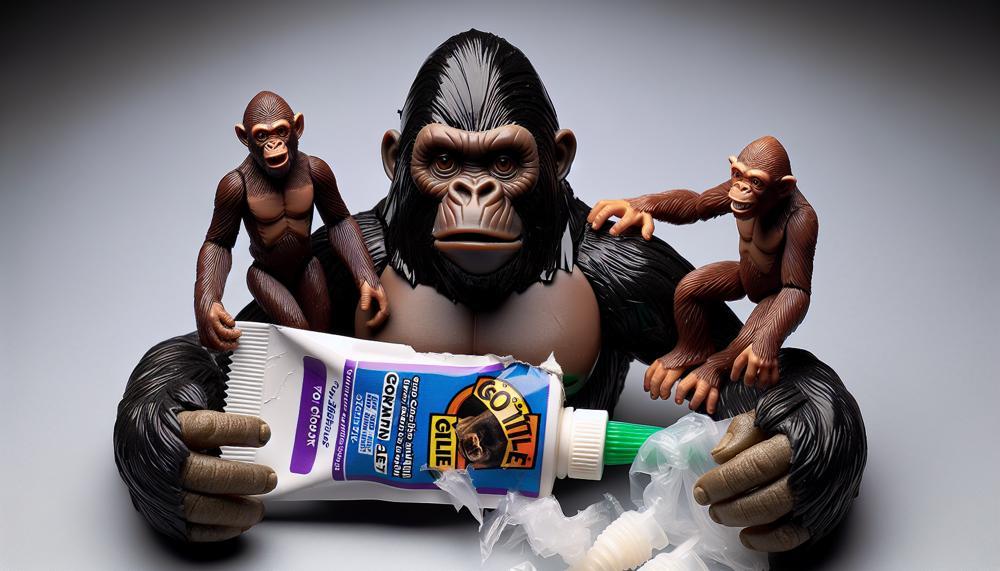
When using Gorilla Glue on car plastic, follow the same steps as repairing plastic glass frames. Ensure the surface is clean and dry before applying the glue. It’s also recommended to test the glue on a small area first to ensure compatibility with the specific type of plastic.
Gorilla Glue is a polyurethane-based adhesive, making it most effective on materials like PVC, polycarbonate, and acrylic. However, it may not work as well on other types of plastics, such as polypropylene or polyethylene. In these cases, it’s best to use a specialized plastic adhesive or seek professional assistance.
Tips for Using Gorilla Glue on Car Plastic:
- Clean the surface: Before applying any adhesive, make sure the surface is free from dirt, grease, and other contaminants. This will ensure a strong bond between the plastic and glue.
- Use a small amount: Gorilla Glue expands as it dries, so use a small amount to avoid any messiness. Remember, a little goes a long way with this powerful adhesive.
- Follow instructions: Gorilla Glue comes with specific instructions for use, so be sure to read and follow them carefully. This will ensure the best results and prevent potential damage to the plastic.
- Seek professional help: If you’re unsure about using Gorilla Glue or if the repair is complex, it’s always best to seek professional assistance. They have the expertise and tools to properly repair plastic parts on a car.
Conclusion
In conclusion, it’s safe to say that Gorilla Glue is the ultimate solution for all your plastic bonding needs.
With its unbreakable bond, waterproof formula, versatility, and user-friendly application, it stands out among other glues in the market. Its unique composition and chemical reaction create a strong and durable bond with plastic surfaces that can withstand heavy weights and tough conditions.
And don’t forget to store it correctly for future projects.

